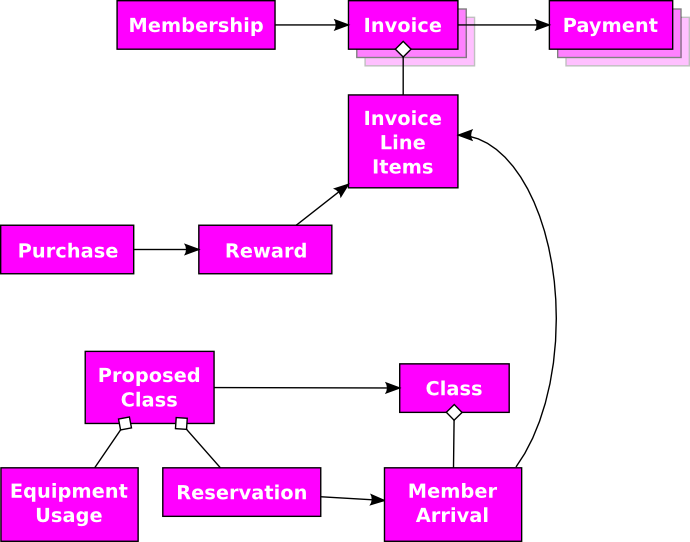Modeling in Color, Part III - The Mighty «moment-interval» Archetype
In Java Modeling in Color with UML, the authors define the «moment-interval» archetype as
something that one needs to work with and track for business or legal reasons, something that occurs at a moment in time or over an interval of time.
Originally, Peter Coad called this archetype «transaction»; however, this caused a lot of confusion in the programming community due to the implication that “transaction” meant “business transaction”, like a sale or a purchase. Coad actually meant the purer definition of the word as an exchange or interaction between parties. Because of the confusion, he renamed the archetype from «transaction» to «moment-interval», a more cumbersome phrase with a neutral meaning.
This post discusses finding «moment-interval»s in our problem domain and using them in our object-oriented designs.
Finding «moment-interval»s
Because I’ve done this software thing for quite a while, identifying «moment-interval»s in a problem domain comes naturally. For newer modelers, Stephen R. Palmer offers some valuable advice.
When looking for Moment-Interval classes for a particular piece of software, we need to consider things like significant events and activities, business transactions, steps in a process, or interactions within a business relationship that are within the scope [of] our software system, application, or component.
In most (all?) books that discuss object-oriented design, the authors suggest to find the nouns to find the classes in the problem domain. As invaluable as that advice may sound, sometimes a «moment-interval» masquerades as a verb in the problem domain. Here, again, I present the requirements for our athletic club software.
- People join the club to become members and get invoiced monthly a flat fee and participation fees for classes
- Participation fees for classes consist of a prorated amount of the instructor’s hourly rate and a percentage of the cost of the equipment used by participants in the class
- Record member purchases of food and beverages from the club for rewards
- For every ten dollars spent on food and beverages from the club, the member receives a one dollar credit on their next invoice.
- Members RSVP for classes and their arrival is recorded
- Instructors schedule rooms and equipment for classes
Consider the first part of the first statement.
People join the club to become members
We see the nouns people and members. However, the verb join implies a transaction between a person and the club. That transaction, let’s call it “membership”, embodies a moment in time that a person becomes a member. We have found a «moment-interval» that did not have a direct name!
Business processes described as a sequence of «moment-interval»s
Transactions in a business process rarely exist in isolation. For example, at my
university, I had to enter into an Enrollment transaction with the school
before I could enter into a Graduation transaction from the school. These
transactions occur in a flow: I enroll → I pass classes → I graduate.
When we model in color, we use the «moment-interval» archetype to specify each of the steps of a process to track as part of our software. A «moment-interval» can have zero-to-many previous «moment-interval»s and zero-to-many «moment-interval»s that occur after it. These chains allow us to construct the behavior and data associations across the lifetime of a business process.
Let’s take a look at the list of «moment-interval»s from the athletic club requirements:
- class
- invoice
- member arrival
- member purchase
- membership
- payment
- reservation
- reward
For a lot of these transactions, everything must start with a membership. So, that’s where we start. Then, other «moment-interval»s follow as events that occur after a person’s initial transaction of membership. My take on it appears in the figure below.

And, there we have it. The next exercise will consist of filling out the «role», «thing», and «description» participants for each of those transactions.